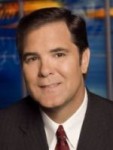 Greg Hunter – Best-selling author Nomi Prins says the only thing propping up the system is money printing. The tip of the iceberg was the Greek debt crisis. Prins says, “Before it happened, there was a lot of concern at the central bank level. That wasn’t really discussed very much in the press . . . but I believe behind the scenes there were a lot of fearful conversations about the financial system, not just the relationship of the euro and Greece politically, which was a part of it, but you don’t want any chips to fall off your table. Anything could open the door for a run on liquidity (cash), which is also why I talk about what individuals should do more and more now is try to preserve their own liquidity and to take more cash out of the markets or out of banks to just have on the side before this period of volatility, before we have the actual crash. This is a tenuous situation. I am afraid of things that look like a bail-in up to the level of a bail-in.”
Greg Hunter – Best-selling author Nomi Prins says the only thing propping up the system is money printing. The tip of the iceberg was the Greek debt crisis. Prins says, “Before it happened, there was a lot of concern at the central bank level. That wasn’t really discussed very much in the press . . . but I believe behind the scenes there were a lot of fearful conversations about the financial system, not just the relationship of the euro and Greece politically, which was a part of it, but you don’t want any chips to fall off your table. Anything could open the door for a run on liquidity (cash), which is also why I talk about what individuals should do more and more now is try to preserve their own liquidity and to take more cash out of the markets or out of banks to just have on the side before this period of volatility, before we have the actual crash. This is a tenuous situation. I am afraid of things that look like a bail-in up to the level of a bail-in.”
[youtube=https://youtu.be/132lK9W28Ok]
Prins, who was a top Wall Street Banker, says the too-big-to-fail banks are much bigger and will be much harder to save in the next crash. The stats Prins comes up with to illustrate this are stunning. Prins says, “43% more deposits are held by the big six banks in the United States since before the crisis (in 2008). 84% more assets are held by the big six banks and 400% more cash. . . . The point is the big six banks control more deposits, more assets, more trading, more cash than they did before. That’s a fact.”
Prins says, now more than ever before, central bankers are fearful. What are they afraid of? Prins contends, “Their fear is the liquidity that they put into the system through epic unprecedented methods . . . all the money they dumped into the markets to make them appear healthy and the banks controlling much of them, the fear is if they pull that plug, if that liquidity somehow falters . . . that things start to tank and implode very quickly. The only think keeping these markets up, the only thing keeping these banks up is either the artificial funding or the purchasing of bonds. Basically, the central bank interventions is the only thing keeping this going.” Continue reading →
 Greg Hunter – Three-time, best-selling book author Nomi Prins says the reason why there is so much uncertainty and chaos in the global economy comes down to one simple theme, and that is a couple of decades of central bank money printing has created the biggest Ponzi scheme the world has ever seen.
Greg Hunter – Three-time, best-selling book author Nomi Prins says the reason why there is so much uncertainty and chaos in the global economy comes down to one simple theme, and that is a couple of decades of central bank money printing has created the biggest Ponzi scheme the world has ever seen.
 Greg Hunter – Best-selling author Nomi Prins says the only thing propping up the system is money printing. The tip of the iceberg was the Greek debt crisis. Prins says, “Before it happened, there was a lot of concern at the central bank level. That wasn’t really discussed very much in the press . . . but I believe behind the scenes there were a lot of fearful conversations about the financial system, not just the relationship of the euro and Greece politically, which was a part of it, but you don’t want any chips to fall off your table. Anything could open the door for a run on liquidity (cash), which is also why I talk about what individuals should do more and more now is try to preserve their own liquidity and to take more cash out of the markets or out of banks to just have on the side before this period of volatility, before we have the actual crash. This is a tenuous situation. I am afraid of things that look like a bail-in up to the level of a bail-in.”
Greg Hunter – Best-selling author Nomi Prins says the only thing propping up the system is money printing. The tip of the iceberg was the Greek debt crisis. Prins says, “Before it happened, there was a lot of concern at the central bank level. That wasn’t really discussed very much in the press . . . but I believe behind the scenes there were a lot of fearful conversations about the financial system, not just the relationship of the euro and Greece politically, which was a part of it, but you don’t want any chips to fall off your table. Anything could open the door for a run on liquidity (cash), which is also why I talk about what individuals should do more and more now is try to preserve their own liquidity and to take more cash out of the markets or out of banks to just have on the side before this period of volatility, before we have the actual crash. This is a tenuous situation. I am afraid of things that look like a bail-in up to the level of a bail-in.” It is widely assumed that the super-wealthy top 1/10th of 1% are against a guaranteed minimum income (GMI) (also known as guaranteed basic income or basic income guarantee) because this would somehow limit their wealth and power.
It is widely assumed that the super-wealthy top 1/10th of 1% are against a guaranteed minimum income (GMI) (also known as guaranteed basic income or basic income guarantee) because this would somehow limit their wealth and power.